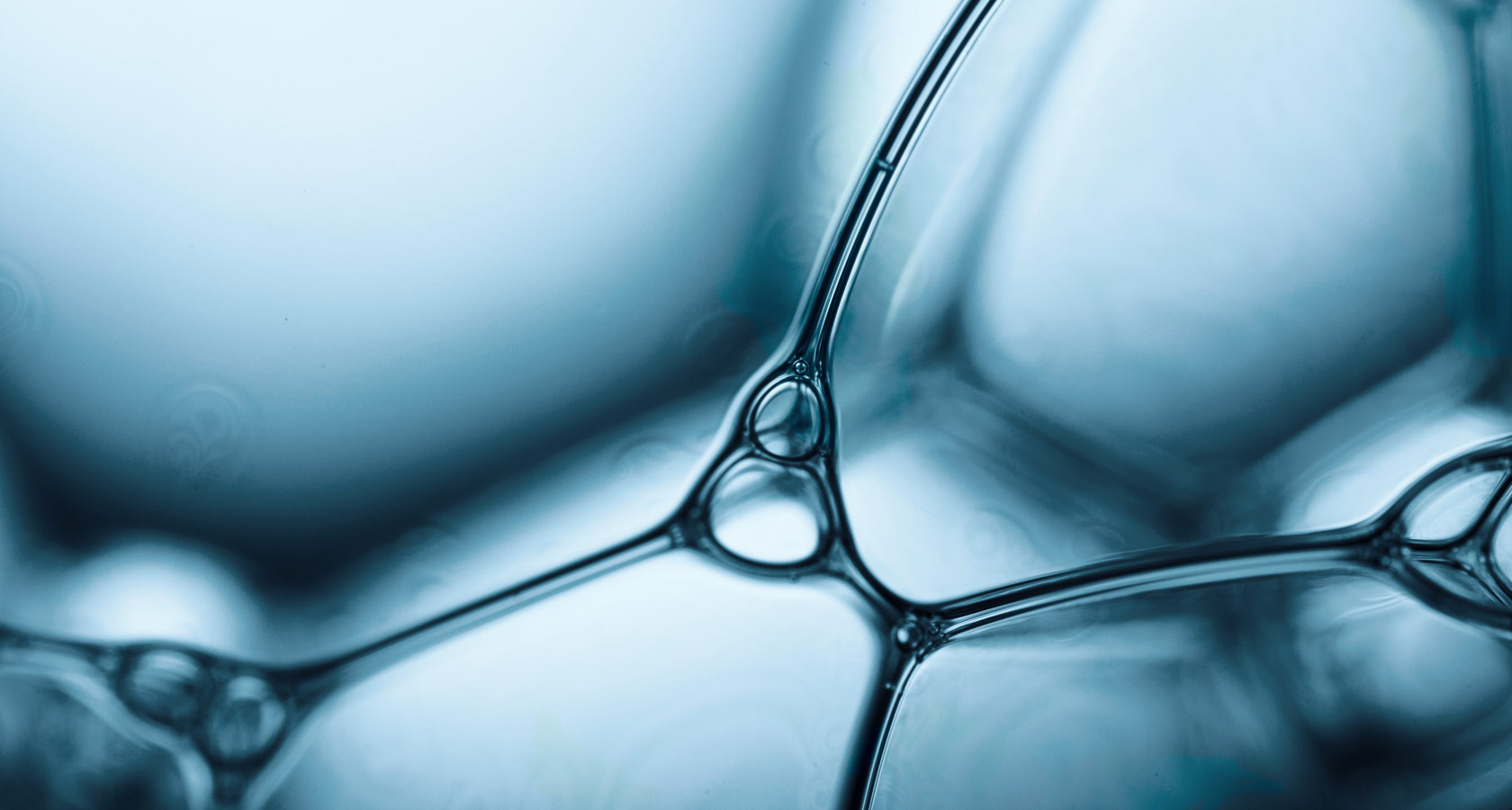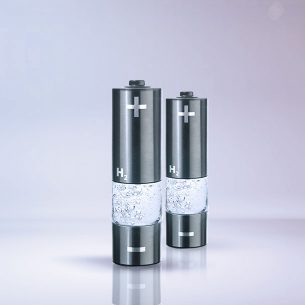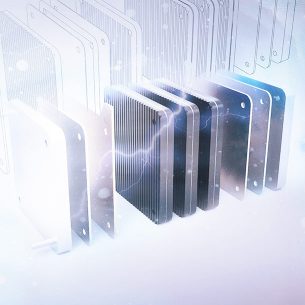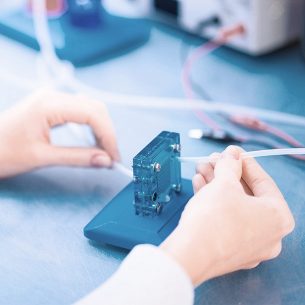HomepageBWT Products Membran – Fuel Cell
Membranes: the Heart of the Fuel Cell

What are membranes?
A membrane is basically a thin film, or lamella, that is able to divide or delineate an element. A membrane may be permeable to certain substances, but others cannot pass through it. Membranes are also a component of all cells, and therefore the basis of life. So, in terms of their composition, shape and functions, membranes are as multifaceted as life itself. What better way of learning than from the ingenious ideas of mother nature?
Membranes used for technical applications consist mainly of polyurethanes and, to a lesser extent, ceramics, and both are extremely fine. To ensure adequate stability, they are supported by structures made from identical or different materials. Membranes are generally used to separate substances from each other. The great advantage of processes that use membranes is that they tend to perform cost-effectively and are both energy-efficient and eco-friendly. Membrane systems are also constructed as compact, modular structures.
Applications

Membranes are extremely versatile, and can be used in numerous applications:
- for water treatment in ion exchangers
- as the heart of the fuel cell
- for batteries
- for water electrolysis
Fuel cells for the cars of tomorrow
All the major car manufacturers have recognised the potential of fuel cell technology. There is hardly a make of car that does not exploit this propulsion technology, while the development of fuel cell vehicle prototypes is becoming increasingly widespread.
Although the network of hydrogen filling stations is currently underdevelopped, it is growing. Experts agree that hydrogen propulsion offers the perfect combination of climate-friendly electro mobility and quick refuelling at filling stations, as we know it from petrol and diesel.
However, the potential uses of this innovative technology are by no means confined to the automotive sector; fuel cells can also be used, for example, to supply electricity for portable electrical devices or to generate electricity and heating in private households.
Membrane production at BWT
FUMATECH BWT is a subsidiary of the BWT Group and the leading producer of ion exchanger membranes. The company has gained extensive knowledge from over 25 years’ experience in membrane manufacturing and membrane process technology, from the synthesis of the raw and auxiliary materials to the processing of these materials into membranes, right up to their technical application. FUMATECH BWT has earned a particularly high international reputation as a supplier of innovative membranes – the heart of the PEM fuel cell.





Technology for the energy of tomorrow